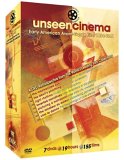| Reviews & Columns |
|
Reviews DVD TV on DVD Blu-ray 4K UHD International DVDs In Theaters Reviews by Studio Video Games Features Collector Series DVDs Easter Egg Database Interviews DVD Talk Radio Feature Articles Columns Anime Talk DVD Savant Horror DVDs The M.O.D. Squad Art House HD Talk Silent DVD
|
DVD Talk Forum |
|
|
| Resources |
|
DVD Price Search Customer Service #'s RCE Info Links |
|
Columns
|
|
|
Unseen Cinema
The DVD format has been good to people who are interested in early cinema and how the language of film was developed. There are been several excellent collections that explore the beginnings of motion pictures and many films that haven't been shown in decades are now available for home viewing with gorgeously restored prints. Now another boxed set has been issued, and it is one of the most ambitious projects so far. Unseen Cinema: Early American Avant Garde Film 1893 –1941 is an amazingly complete set that throughly examines the early days of experimental film. Containing 155 films (most of them exceedingly rare) and running a mind-boggling 19 hours, this is set that everyone who appreciates the fact that movie can be art should own.
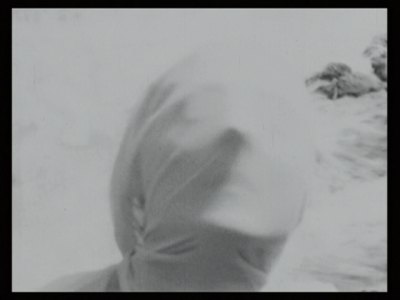
Avant-garde is a French term that means vanguard, the troops that lead the way. When applied to film, it refers to those experimental and unusual films that are on the cutting edge, trying something new and different. Sometimes these experiments work well and the camera techniques and narrative structure are copied and become mainstream, and other times they don't. Even the failures are interesting to examine and ponder just where they went wrong.
This collection uses a rather broad definition of avant-guard film and casts a wide net. There are a few shorts that I wouldn't have considered experimental films, but only a few, and most of those are the very earliest films in the collection. (When the motion pictures began, everything was new. I don't think that makes films like Westinghouse Works edgy. I will readily admit that I'm nit-picking here. Hey, I'm a critic and have to find something negative to say about everything or else I'll be up in front of the board.)
The set is arranged by theme rather than chronologically, with each disc covering a different topic. (Within each disc the films are presented in chronological order.) This is a wonderful way to present these films. By organizing them by topic its possible to illustrate the way different artists approached similar topics and problems. Viewers also start to draw connections between the films and see how they evolved over time.
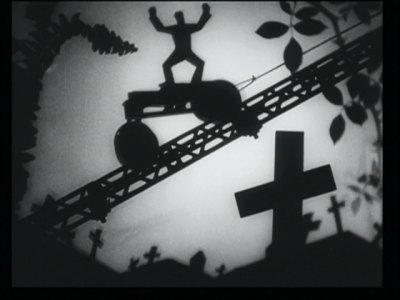
These aren't all obtuse, boring, "intellectual" films either. Though some may try the patience of viewers, these are not all films that were odd just for the sake of being different. Some of these movies were made with commercial intent, and appeared in theaters across the country. One film included in the collection was broadcast as a "valentine" to viewers by NBC in 1939, and others were incorporated into feature films (such as the excerpt from the Douglas Fairbanks film When the Clouds Roll By.)
The films included in this fine set are not all narrative films though. Indeed, many of them are not. These unusual films that don't tell a story are more like an abstract painting, a cinematic construction that can be breathtaking to view and play with images and sound more than they are trying to tell a story. Some of these were my favorite entry in the set.
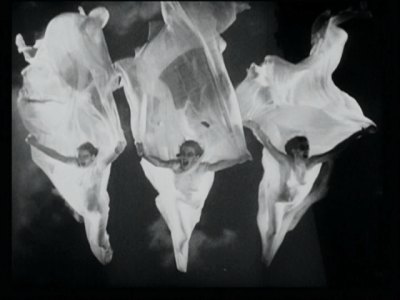
You could write a book discussing the films in this set, so I'll limit myself to just the highlights from each volume.
Volume One: The Mechanized Eye:
This volume features films that expanded the uses of movie cameras and created new or unusual effects and images. The directors create these striking visuals both in and out of the camera, sometimes drawing on the film or actually putting objects on the film stock before exposing it. These films also play with the way film can be used to tell a story. Portrait of a Young Man attempts to use cinema for its calming effect, not just as a tool for producing excitement or laughter. Without a story, these long shots, (too long often) with no sound show the sea, trees, and smoke, in a very sedate and poised manner.
In Youth, Beside the Lonely Sea presents an impressive tripict with three films being shown on three screen simultaneously (the most famous use of this was in Gance's Napoleon.) The film utilizes the effect well, having objects move from one screen to another flawlessly.
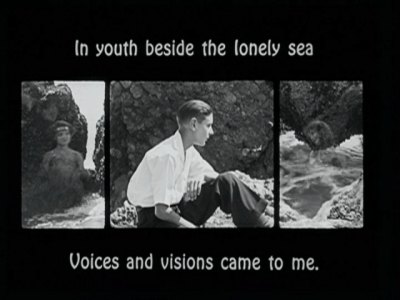
One of the best films on this first volume though is Pie in the Sky featuring a young Elia Kazan in a starting role. A stinging attack on religion and the powers that be, this depression era film tells the story of two men who are down on their luck. After listening to a sermon in a soup kitchen about how God will provide for all, the men end up at the end of the line and don't get any food. They head to a dump where they use car parts and imagine that they are eating a sumptuous feast. At the end they impersonate religious leaders and politicians who promise much but deliver little. A interesting film both in style and content.
Volume Two - The Devil's Plaything - American Surrealism:
Easily my favorite disc, this has some wonderfully different films. In addition to Dream of a Rarebit Fiend (which is also available in Kino's The Movies Begin set) and The Thieving Hand (which appeared on the first Treasures From American Film Archives collection) there are several wonderful surrealist experiments on this disc. The Life and Death of 9413 is a comment on the Hollywood system that uses people without remorse.
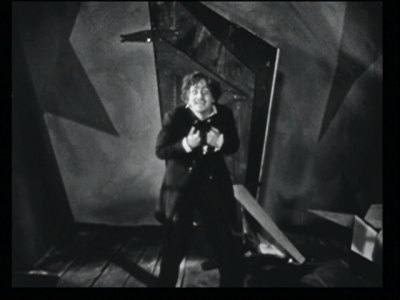
Allegedly filmed for only $97, this film mixes miniature shots with live action scenes to great effect. Another outstanding film is the Caligary influenced The Telltale Heart, based upon the story by Edgar Allen Poe.
Volume Three: Light Rhythms - Music and Abstraction:
This disc focuses on the interplay between image and sound, and the more abstract qualities of light and film. Another impressive disc, and one that has many films that are mesmerizing to watch. One impressive movie is Le Ballet Mécanique, an abstract film that is presented here for the first time with the soundtrack that was composed for the film. The score calls for eight percussionist, two pianists, bells, sirens, an airplane propeller and (get ready for this) sixteen player pianos. The cacophony of sound meshes with the series of images on the screen for a unique and interesting experience.
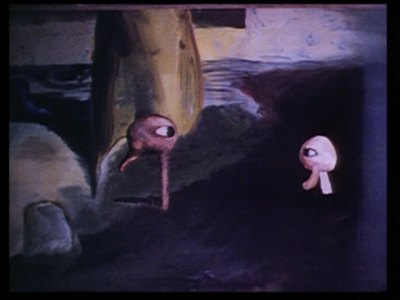
I also enjoyed the Glenn Falls Sequence, a set of very short films that were created by applying non-drying paint to glass and then manipulating it in stop-motion animation style. A whimsical and fun series of shorts.
Volume Four: Inverted Narratives - New Directions in Story-Telling:
The way that movies are able to tell stories, and how they go about doing it is examined in these sets of films. Starting off with an early D. W. Griffith short and one by the pioneering female director Lois Weber, we get to see how the narrative structure that we are familiar with came about. The Bridge (released as The Spy) is a 1929 silent version of the Ambrose Bierce story An Occurrence on Owl Creek Bridge. Told without intertitles, this film effectively tell the story while changing the point of view of the film unbeknownst to the viewer.
Volume Five: Picturing a Metropolis - New York City Unveiled: (also available separately)
New York City is featured on this disc, and even if you don't live in the Big Apple there are some films that you'll find interesting. Manhatta is a collaboration between still photographer Paul Strand and painter Charles Sheeler, and they bring their eye for composition and detail to this film. This early look at Manhattan was the inspiration for the city symphony films, and it is easy to see why this picture was so influential. Often poetic in the way it was filmed, these two artists turn dull everyday scenes into something beautiful. From a mass of people getting off of a ferry to smoke emerging from the chimneys of tenement houses, this film makes you see the routine in a new light.
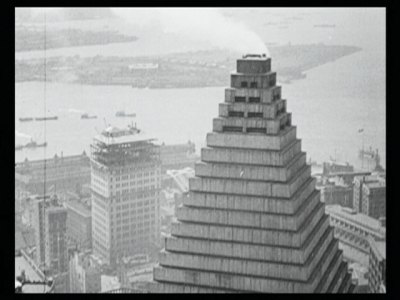
Another standout film on this disc is Robert Flaherty's Twenty-four-Dollar Island. Flaherty is best known for his influential travel film/documentary Nanook of the North, but this film is a little different. It features New York as a character, with a personality and life of its own. An interesting film that's easy to get lost in, this is the most complete version that exists.
Volume Six: The Amateur as Auteur - Discovering Paradise in Pictures:
This volume is mostly taken up with home movies and amateur productions. Far from being dull and monotonous though, these are often very interesting. The various films capture candid moments of life on the farm, or a family Christmas. Some of these compilations do run a little on the long side, but they were all interesting in one way or another. Joseph Cornell's Children Trilogy is perhaps the best, presenting a wide range of entertaining scenes, from circus acts to a children's Halloween party.
Volume Seven: Viva la Dance - The Beginnings of Ciné-Dance:
This final disc concerns itself with dance, but not always in the way you would think. There are many examples of dancing men and women, including a series of Edison movies shot in the late 19th century, but there are also many unconventional dance films too. Film in which the dance is preformed by objects or colors. One interesting movie is Hände: Das Leben und die Liebe eines Zärtlichen Geschlechts (Hands: The Life and Loves of the Gentler Sex) in which a number of hands preform the act. Mechanical Principles does away with people altogether and applies music to the movements of machines to create a type of ballet.
I was also very interested to see the 10-minute segment from Sergei Eisenstein's ill-fated Mexican film that was included. His recording of Day of the Dead dancers was very enjoyable.
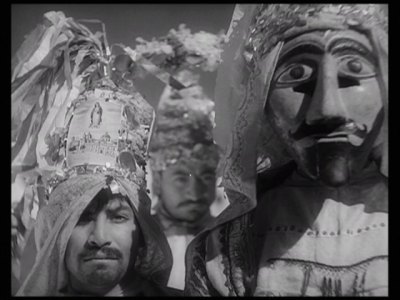
Another film that isn't often seen is the 1941 version of Peer Gynt by director David Bradley. It features a 17-year-old Charlton Heston in the title role. Bradley would later go on to direct Julius Caesar in 1950 production with Heston as Antony.
This is a really wonderful set that contains a spectacular array of films. The only caveat is that it is hard to watch more than a few of these short films at a time, otherwise burn out is a problem. Screen a couple at a time though and you will be amazed at the wide variety of interesting experimental films that are included.
Bruce Posner is the individual responsible for putting this all together and he deserves all the accolades that he will receive. Tracking these films down was a Herculean task, he and his staff have scoured the world looking for films to include in this collection. In the end, 60 film archives from around the world contributed to this project.
There is also a text page written by Mr. Posner and/or another film scholar that introduces each movie. These were very informative and made the collection even more enjoyable than it would have been without them.
The DVD set was produced by David Shepard who always does an extraordinary job with the projects he associates himself with. This one was no exception. The transfers were top-notch all the way around.
The films included in this set are:
Disc One: The Mechanized Eye - Experiments in Technique and Form:
5 Paris Exposition Films (1900)—James White
Eiffel Tower from Trocadero Palace (1900)
Palace of Electricity (1900)
Champs de Mars (1900)
Panorama of Eiffel Tower (1900)
Scene from Elevator Ascending Eiffel Tower (1900)
Captain Nissen Going through Whirpool Rapids, Niagra Falls (1901)—creators unknown
Down the Hudson (1903)—Frederick Armitage & A.E. Weed
The Ghost Train (1903)—creators unknown
Westinghouse Works, Panorama View Street Car Motor Room (1904)—G.W. "Billy" Bitzer
In Youth, Beside the Lonely Sea (c. 1924-25)—creators unknown
Melody on Parade (c. 1936)—creators unknown
La Cartomancienne (The Fortune Teller) (1932)—Jerome Hill
Pie in the Sky (1934-35)—Nykino: Elia Kazan, Ralph Steiner & Irving Lerner
Travel Notes (1932)—Walker Evans
Oil: A Symphony in Motion (1930-33)—Artkino: M.G. MacPherson & Jean Michelson
Poem 8 (1932-33)—Emlen Etting
Storm (1941-43)—Paul Burnford
Portrait of a Young Man (1925-31)—Henwar Rodakiewicz
Disc Two: The Devil's Plaything - American Surrealism:
Jack and the Beanstalk (1902)—Edwin S. Porter
Dream of a Rarebit Fiend (1906)—Edwin S. Porter
The Thieving Hand (1907)—creator unknown, Vitagraph
Impossible Convicts (1905)—G.W. "Billy" Bitzer
When the Clouds Roll By (1919)—Douglas Fairbanks & Victor Fleming (excerpt)
Beggar on Horseback (1925)—James Cruze (excerpt)
The Fall of the House of Usher (1926-27)—J.S. Watson, Jr. & Melville Webber
The Life and Death of 9413: A Hollywood Extra (1927)— Robert Florey & Slavko Vorkapich
The Love of Zero (1928)—Robert Florey & William Cameron Menzies
The Telltale Heart (1928)—Charles Klein
Tomatos Another Day (1930/1933)—J.S. Watson, Jr. & Alec Wilder
The Hearts of Age (1934)— William Vance & Orson Welles
Unreal News Reels (c. 1926)—Weiss Artclass Comedies (excerpt)
The Children's Jury (c. 1938)—attributed Joseph Cornell
Thimble Theater (c. 1938)—Joseph Cornell
Carousel: Animal Opera (c. 1938)—Joseph Cornell
Jack's Dream (c. 1938)—Joseph Cornell
Disc Three: Light Rhythms - Music and Abstraction:
Le Retour à la raison (1923)—Man Ray
Ballet mécanique (1923-24)—Fernand Léger & Dudley Murphy
Anémic cinéma (1924-26)—Rrose Sélavy (Marcel Duchamp)
Looney Lens: Anamorphic People (1927)—Al Brick
Out of the Melting Pot (1927)—W.J. Ganz Studio
H20 (1929)—Ralph Steiner
Surf and Seaweed (1929-30)—Ralph Steiner
7 Vorkapich Montage Sequences (1928-37)—Slavko Vorkapich
The Furies (1934)
Skyline Dance (1928)
Money Machine (1929)
Prohibition (1929)
The Firefly— Vorkapich edit (1937)
The Firefly—MGM release version (1937)
Maytime (1937)
So This Is Paris (1926)—Ernst Lubitsch (excerpt)
Light Rhythms (1930)—Francis Bruguière & Oswell Blakeston
Une Nuit sur le Mont Chauve (Night on Bald Mountain) (1934)—Alexandre Alexeieff & Claire Parker
Rhythm in Light (1934)—Mary Ellen Bute, Ted Nemeth & Melville Webber
Synchromy No. 2 (1936)—Mary Ellen Bute & Ted Nemeth
Parabola (1937)—Mary Ellen Bute & Ted Nemeth
Footlight Parade - "By a Waterfall" (1933)—Busby Berkeley
Glen Falls Sequence (1937-46)—Douglass Crockwell
Simple Destiny Abstractions (1937-40)—Douglass Crockwell
Abstract Movies (1937-47)—George L.K. Morris
Scherzo (1939)—Norman McLaren
Themis (1940)—Dwinell Grant
Contrathemis (1941)—Dwinell Grant
1941 (1941)—Francis Lee
Moods of the Sea (1940-42)—Slavko Vorkapich & John Hoffman
Disc Four: Inverted Narratives - New Directions in Story-Telling:
The House with Closed Shutters (1910)—D.W. Griffith & G.W. "Billy" Bitzer
Suspense (1913)—Lois Weber & Philips Smalley
Moonland (c. 1926)—Neil McQuire & William A. O'Connor
Lullaby (1929)—Boris Deutsch
The Bridge (1929-30)—Charles Vidor
Little Geezer (1932)—Theodore Huff
Black Dawn (1933)—Josef Berne & Seymour Stern
Native Land (1937-41)—Frontier Films: Leo Hurwitz & Paul Strand (excerpt)
Black Legion (1936-7)—Nykino: Ralph Steiner & Willard Van Dyke
Even As You and I (1937)—Roger Barlow, Harry Hay & Le Roy Robbins
Object Lesson (1941)—Christoher Young
"Sredni Vashtar" by Saki (1940-43)—David Bradley
Disc Five: Picturing a Metropolis - New York City Unveiled: (also available seperately)
The Blizzard (1899)—creators unknown
Lower Broadway (1902)—Robert K. Bonine
Beginning of a Skyscraper (1902)—Robert K. Bonine
Panorama from Times Building, New York (1905)—Wallace McCutcheon
Skyscrapers of NYC from North River (1903)—J.B. Smith
Panorama from Tower of the Brooklyn Bridge (1903)—G.W. "Billy" Bitzer
Building Up and Demolishing the Star Theatre (1902)—Frederick Armitage
Coney Island at Night (1905)—Edwin S. Porter
Interior New York Subway 14th Street to 42nd Street (1905)—G.W. "Billy" Bitzer
Seeing New York by Yacht (1902)—Frederick Armitage & A.E. Weed
2 Looney Lens: Split Skyscrapers (1924) and Tenth Avenue, NYC (1924)—Al Brick
4 Scenes from Ford Educational Weekly (1916-24)—creators unknown
Manhatta (1921)—Charles Sheeler & Paul Strand
Twentyfour-Dollar Island (c. 1926)—Robert Flaherty
Skyscraper Symphony (1929)—Robert Florey
Manhattan Medley (1931)—Bonney Powell
A Bronx Morning (1931)—Jay Leyda
Footnote to Fact (1933)—Lewis Jacobs
Seeing the World (1937)—Rudy Burckhardt
Pursuit of Hapiness (1940)—Rudy Burckhardt
Gold Diggers of 1935 — "Lullaby of Broadway" (1935)—Busby Berkeley (excerpt)
Autumn Fire (1930-33)—Herman Weinberg
Disc Six: The Amateur as Auteur - Discovering Paradise in Pictures:
7 Case Sound Tests (c. 1924-25)—Theodore Case & Earl Sponable
Windy Ledge Farm (c. 1929-34)—Elizabeth Woodman Wright
A Day in Santa Fe (1931)—Lynn Riggs & James Hughes
4 Stewart Family Home Movies (c. 1935-39)—Archie Stewart
Children's Party (c. 1938)—Joseph Cornell
Cotillion (c. 1938)—Joseph Cornell
The Midnight Party (c. 1938)—Joseph Cornell
Haiti (1938)—Rudy Burckhardt
Tree Trunk to Head (1938)—Lewis Jacobs
Bicycle Polo at San Mateo (1940-42)—Frank Stauffacher
1126 Dewey Avenue, Apt. 207 (1939)—John C. Hecker
Disc Seven: Viva la Dance - The Beginnings of Ciné-Dance:
7 Annabelle Dances and Dances (1894-1897)—W.K.L. Dickson, William Heise & James White
Davy Jones' Locker (1900)—Frederick Armitage
Neptune's Daughters (1900)—Frederick Armitage
A Nymph of the Waves (1900)—Frederick Armitage
Diana the Huntress (1916)—Charles Allen & Francis Trevelyan Miller (excerpt)
The Soul of the Cypress (1920)—Dudley Murphy
Looney Lens: Pas de deux (1924)—Al Brick
Hände: Das Leben und die Liebe eines Zärtlichen Geschlechts (Hands: The Life and Loves of the Gentler Sex) (1928)—Stella Simon & Miklos Bandy
Mechanical Principles (1930)—Ralph Steiner
Tilly Losch in Her Dance of the Hands (c. 1930-33)—Norman Bel Geddes
2 Eisenstein's Mexican Footage (1931)—Sergei Eisenstein (excerpts)
Oramunde (1933)—Emlen Etting
Hands (1934)—Ralph Steiner & Willard Van Dyke
Joie de vivre (1934)—Anthony Gross & Hector Hoppin
Wonder Bar: "Don't Say Goodnight" (1934)—Busby Berkeley (excerpt)
Dada (1936)—Mary Ellen Bute & Ted Nemeth
Escape (1938)—Mary Ellen Bute & Ted Nemeth
An Optical Poem (1938)—Oskar Fischinger
Abstract Experiment in Kodachrome (c. 1940s)—Slavko Vorpapich
NBC Valentine Greeting (1939-40)—Norman McLaren
Stars and Stripes (1940)—Norman McLaren
Tarantella (1940)—Mary Ellen Bute, Ted Nemeth & Norman McLaren
Spook Sport (1940)—Mary Ellen Bute, Ted Nemeth & Norman McLaren
Danse Macabre (1922)—Dudley Murphy
Peer Gynt (1941)—David Bradley, starring Charlton Heston (excerpt)
Introspection (1941/46)—Sara Kathryn Arledge
The DVD:
These 155 films are contained on seven DVDs which come in thinpak cases. They are housed in a colorful thin board slipcase.
Audio:
Approximately two thirds of the films in this collection are silent, and unless it was the creator's intention to have the movie screened without music, a new score was added. Many of the best silent movie composers contributed to this including Donald Sosin, Eric Beheim, and Robert Israel among many others. These new compositions all sounded impeccable. They were clean and clear without any audio defects. The movies that did come with soundtracks varied, but they generally sounded very good. Some had background noises or pops, but it was never distracting.
Video:
All of these films have been restored, and they look fantastic. Of course restoration can only do so much, and some of these films are still showing their age, but overall the set is magnificent. The prints are generally free from major defects with a good amount of contrast and detail. Common imperfections include spots and dirt along with several movies that are soft. Still, these are not major defects. I was very pleased with the quality of the picture. An excellent job.
Extras:
As far as extras go, each disc includes DVD-ROM files of filmmaker bios, musician credits and acknowledgments as well the DVD credits.
Final Thoughts:
This is a film class in a box. You can learn more about early cinema and avant-garde film by watching this set than you can in most university film programs. This is the most comprehensive collection of early experimental that one can imagine. Not only is this a good overview of the genre, but these rarely seen films, some that I've read about for years, are all presented with very good looking video and with informative introductions. A collection like this is well worth the retail price. Highly Recommended.
|
| Popular Reviews |
| Sponsored Links |
|
|
| Sponsored Links |
|
|
| Release List | Reviews | Shop | Newsletter | Forum | DVD Giveaways | Blu-Ray | Advertise |
|
Copyright 2024 DVDTalk.com All Rights Reserved. Legal Info, Privacy Policy, Terms of Use,
Manage Preferences,
Your Privacy Choices | |||||||









